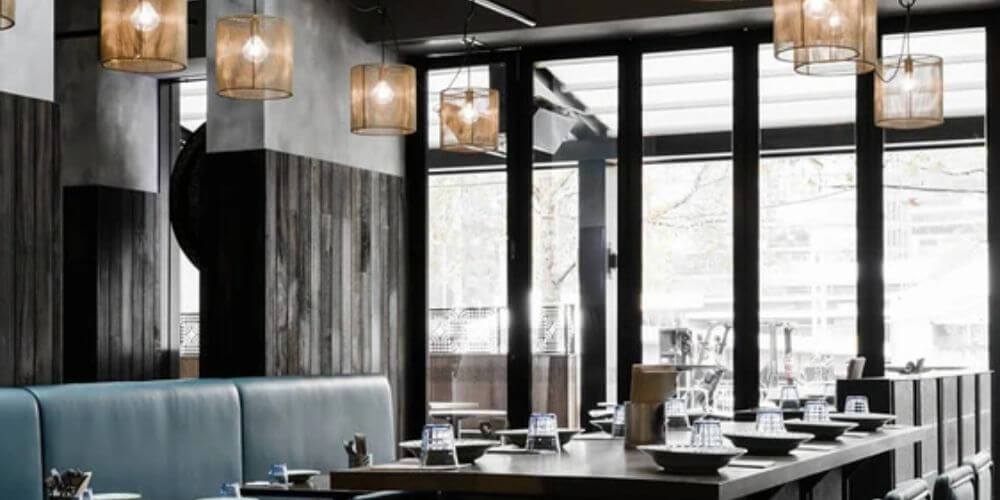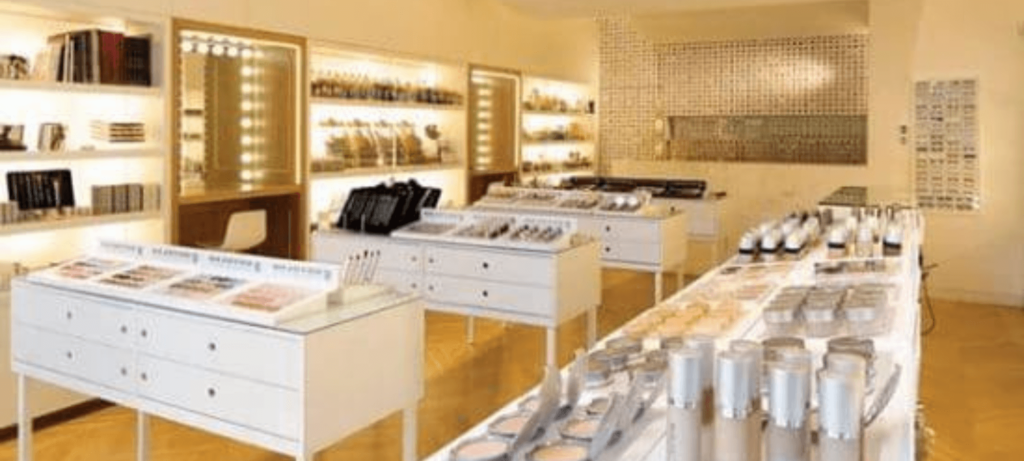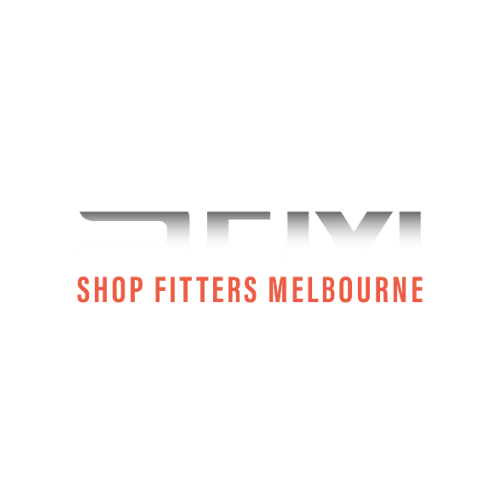Hidden Fitout Costs: How to Spot Them and Avoid Unnecessary Expenses

When I dabbled in retail and attempted to open a retail store, I was so excited to design my dream shop. I spent so much time and money on purchasing expensive fixtures to match the layout I’ve always wanted. However, when construction began, I was blindsided by a landslide of unexpected charges—fees for utility connections, compliance modifications, and contingency padding. These hidden costs added up, blowing my budget by 20%. I felt frustrated and deflated, but determined to understand where I went wrong.
Many business owners experience similar unwanted financial surprises when having a shop fitting project. Vague line items, unclear agreements with contractors, and simply overlooking certain expenses are key factors driving hidden costs. If unaccounted for and unchecked, these hidden charges can derail your plans, delay opening day, or potentially sink your business, which no one wants!
In this blog, I will leverage my decades of experience in retail shopfitting to uncover the most common hidden costs in store build-outs and renovations. With proactive budgeting, savvy contractor negotiations, and careful attention to detail, you can avoid falling victim to surprise fit out costs. By implementing the practical tips in this guide, you’ll develop the financial clarity and control needed to turn your retail dreams into reality on time and within budget.
I’ve helped launch over fifty successful shops, and now I want to share that knowledge with you. Read on as we shed light on hidden fitout costs so you can save money and sanity during your next retail build.
What Affects Shop Fit Out Costs
Transforming a mere space into your dream shop through a shop fitout is an exciting journey, yet navigating the financial landscape can feel like venturing through a fiscal minefield. From poorly defined contracts to the allure of “just one more tweak,” hidden costs lurk around every corner, ready to derail your budget and turn your exciting venture into a financial nightmare. Here are some factors that can increase or decrease shop fit out costs:
- Size of your shop space: The size of your retail space or commercial space can drive costs to the roof. Larger areas require more materials and labour. For example, a two-storey restaurant’s fit out cost will be substantially higher than the fit-out costs of a quaint cafe.
- Quantity and quality of fixtures and fittings: You can’t deny how the quality and type of fittings and fixtures, and where they are sourced play a big role in hiking up expenses. High-end, custom-fit units crafted from premium materials will naturally incur a higher price tag compared to standard, local, and off-the-shelf options.
- Customised fixtures: As business owners, you want your shop or restaurant to stand out by acquiring furnishing that’s custom-fit to your shop’s theme or vision. Any material that requires customisation will cost you extra.
- Labour costs: The cost of labour will vary depending on the complexity of the project, the skill level required, and the location of the commercial space. Hiring experienced professionals specialising in shop fit-outs like us will ensure a high-quality finish but may incur higher labour costs than less experienced individuals. Also consider if the installation of fittings and furnishings needs extra manpower, which will add to your expenses.
- Any plumbing or electrical work needed: As a commercial contractor who has completed lighting overhauls for dozens of shops, electrical upgrades can inflate fit-out quotes rapidly if underestimated or insufficiently scoped during planning.
- Access to the site: Completing shop fit outs in heritage sites or unusual areas like underground malls or subway stations often leads to unanticipated costs. I recently led a boutique installation where materials had to be lowered by a mini-crane down a narrow lightwell into a basement-level mall. The existing stair width couldn’t accommodate our equipment, meaning we had to use other creative ways to make it happen.
- Level of specification: Complex projects that are characterised by intricate finishes, complex layouts, and using smart technology require specialised skills and materials that are top-of-the-line. These things will factor into your overall expenses. Take one of our commercial fit out projects as an example. We were asked to create a clothing store that was modern, and hip, and targeted technology-savvy youngsters. Integrating smart technology was a game-changer, demanding experts well-versed in the latest automation systems. We opted for state-of-the-art lighting controls, interactive screens, and audio-visual systems, elevating the overall sophistication of the clothing store.

Explaining the Most Common Hidden Expenses in Shop Fitting and How to Avoid Them
When taking on a retail shop fit out or a commercial fitout, it’s so easy to get sidetracked and paralysed by the unexpected costs. From plumbing problems to waste removal costs, all kinds of hidden expenses can blow out your set budget, derail plans, and get you off track if you don’t account for each one of them. Not to worry, though. With efficient and comprehensive planning and proactive negotiations with your contractor and suppliers, these hidden costs don’t have to spoil your fitout.
Below, we reveal the most common and stressful hidden costs that can catch business owners off guard. When you begin to understand the things that could drain your budget, it’s easier to recognise them early and come up with contingencies to keep your retail project on track. From my lengthy experience designing and building shops for our clients, I can provide you with expert tips on how to avoid these expenses, so you can launch your store without a single problem!
#1 Permits and Licencing Delays
Shop fitting doesn’t begin when construction starts. Before we can even lay a finger on your retail space, there are tons of paperwork to handle. Some of these permits and licences could include construction and occupancy permits, local council applications, development approvals, liquor licences (if you’re planning on selling), and a whole lot more. These legal requirements add up really fast and could cost you hundreds to thousands of dollars to acquire. Different councils have specific zoning laws, heritage building rules, parking space quotas, etc. Going through each of these could be complicated, especially for a first-timer, which can cause delays that could cause a domino effect of roadblocks down the line.
I had a client named John who wasn’t prepared for the bureaucratic crossroads that awaited him when he took on the project of transforming a heritage property into his gourmet food shop. Unaware of the city council’s stringent regulations concerning modifications to such structures, he submitted renovation plans that were met with a landslide of requests and revisions that he never expected! The review process stretched out for months, forcing his architect back to the drawing board multiple times and costing him thousands. In total, John was faced with unforeseen expenses of $15,000 in permit fees and $5,000 in architectural redraws, a staggering 25% increase over his initial budget and a harsh lesson in the hidden costs of heritage renovations.
How to avoid: When you’re doing shop fit outs for your business, it’s important to be proactive with your local council, understand the local laws and policies and zoning codes, and complete permits and paperwork to get approval. While hiring consultants could sound like the answer to this, you have to know that this convenience comes at a price. Set aside a budget to buffer licencing delays and safeguard your project.
#2 Surprise Structural and System Upgrades
When I was starting in the shop fit out business, there was an instance where I wasn’t able to check the retail space before beginning construction work. On the first day of demolition, I was surprised to find complex structural problems, overly outdated electrical systems, and amenities that don’t adhere to government and industry standards. It got even worse when the plumbing system was corroded and the floors were so unstable that they needed a major overhaul. These defects necessitate major upgrade work and can significantly inflate the costs of business owners. This is why one of the most important steps before beginning fit-out work is to extensively survey and assess the site before you finalise shop design and fit out budget.
How to avoid: Hiring a skilled structural engineer can do wonders! A skilled engineer can meticulously assess your site, unearthing any potential structural challenges, from outdated systems to compromised structural issues. They then translate these findings into clear recommendations for upgrades, ensuring your project’s foundation remains solid. While an inconvenient early expense, their detailed reports uncover defects needing remedy, so you can cost remedial work accurately upfront.
#3 The Debris Dilemma: Waste Management Fees
As mandated by the Environment Protection Authority Victoria, you are legally obligated to dispose of construction and demolition waste following all relevant regulations. Waste disposal is charged by the amount of waste and labour, with the costs increasing when you’re dealing with hazardous waste like asbestos. I had a client who absentmindedly expected us to clean up the mess after them for free! When the waste disposal guys arrived, they estimated the waste removal costs to amount to $8,000, which our client wasn’t prepared for. Because it was a necessary expense, he had to pull out funds from other shop fitting upgrades to get rid of the waste.
How to avoid: A lot of business owners overlook and ignore waste removal expenses. It’s always a good idea to discuss with your shop builder to get an estimate or quantify the costs. A great way to cut down costs on waste removal is to consider recycling and upcycling. Also, don’t forget to include waste management in your shop fit out contract so you don’t get surprised by these costs when they happen.
#4 Utility Connection Quotation Problems
A commercial shop fit out uses several types of utility services like heating, data cables for the internet, water connections, and electrical systems. Experienced commercial shopfitters can quote installation and connection based on the existing blueprints. But it’s important to note that these blueprints don’t always expose the real state of the plumbing and electrical systems. If you begin construction with pre-inspection, you can end up with a list of major construction works that weren’t part of the original plan.
How to avoid: Before you sign project contracts, consult with your shop fitter about the state of your existing systems. Insist on visiting the site for inspection and assessment in order to get a more exact quotation that factors in contingency sums when budgeting your utility connection expenses.
#5 Furniture and Equipment Variables
You’re done with shop design and construction is well on its way! Getting furnishing and furniture installed in your new retail space is one of the most fun parts of shop fitting. Business owners normally think that furnishings are installed without fees. Little did you know that installation also comes at a price! We had a client for a fine dining restaurant fit out who ordered this custom crystal chandelier from overseas. When it arrived at the shop after many delays, he didn’t realise that he needed an electric scissor lift and a specialised electrician to install the chandelier. His bill ballooned to $3,000 for the installation alone! Because of this, project completion was pushed back by 3 weeks, and structural adjustments to make way for the chandelier had to be made.
How to avoid: If you’re keen on purchasing furnishings from overseas or from in-demand suppliers, make sure that you map a purchasing schedule with a long lead time and allocate time for delays. Double-check each of your supplier on fees for customisation, delivery, and installation. Lastly, ensure architectural plans account for weight loadings and electrical capacities of desired furnishings to avoid structural change orders.
#6 No Contingency Buffer
At the end of the day, even with meticulous and detailed planning, bumps happen, even to the most professional and experienced business owners and shopfitters. When you cut down your contingency fund, it may seem like you’re saving money upfront, but this can cost you a huge amount of money later on. Industry experts recommend a 10-15% budget buffer for contingencies, depending on project size and complexity. Instead of treating contingency funds as an add-on expense, seamlessly integrate them into your initial cost plans. Clearly outline the intended purpose of these funds and diligently track their uses if needed. Being proactive earlier on can prepare you to overcome financial surprises along the way.
FAQ
Unforeseen expenses and hidden costs can be a major source of frustration and stress during any shop fit out project. Whether you can hold your contractor accountable for these surprises depends on the specific terms of your agreement. If your signed contract explicitly states that the contractor bears responsibility for all costs associated with the fit out project, then you may have legal grounds to hold them responsible for any hidden expenses that emerge. This is particularly true if these hidden costs were not disclosed upfront and arose due to negligence or incomplete information provided by the contractor.
When you feel like there are hidden costs in your fit out project, immediately take your concerns to your contractor. Demand a comprehensive breakdown of the additional costs and an explanation as to why the costs were incurred. Make sure you get the necessary documentation and verify all the charges. If the charges aren’t justified and seem suspicious, consider obtaining legal counsel to safeguard your interests.
Staying within your budget is one of the priorities when it comes to having a commercial fit out. Here are some tips to help you avoid hidden costs that may give you the shock of your life:
1. Create a detailed and efficient shop fitting plan. It helps to set a realistic budget and timetable that covers unexpected expenses and delays.
2. Your budget should be based on thorough research and planning. Keep your shop fitting plan aligned with your budget by keeping things simple.
3. Having a shop fitout on your own is a big no-no! It’s not as simple as redecorating your home. An expert shop fitter like us at Shop Fitters Melbourne can bring a unique and creative perspective, choose the best suppliers, and have the experience and knowledge to tailor fit shop fitting solutions for you.

